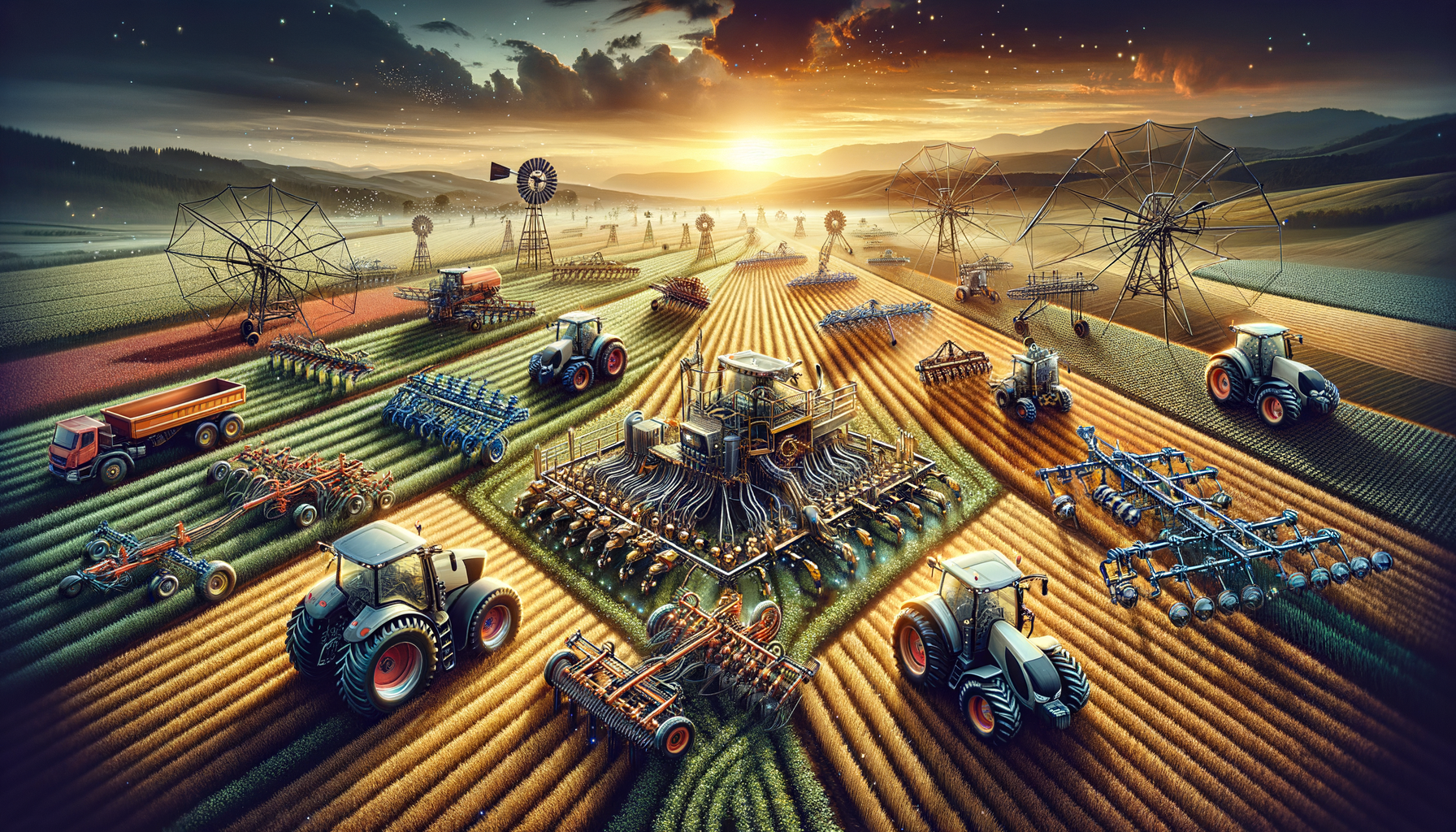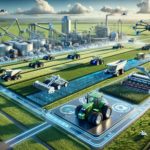The Role of Farming Equipment in Modern Agriculture
Farming equipment has revolutionized the way agricultural operations are conducted, making it possible to cultivate larger areas with increased efficiency. The evolution of farming tools from simple hand-held implements to advanced machinery has played a crucial role in boosting productivity and sustainability. Modern equipment not only saves time but also reduces labor costs, allowing farmers to focus on optimizing crop yields and maintaining soil health.
One of the key advantages of using farming equipment is the ability to perform tasks that would otherwise be labor-intensive or impossible. For instance, tractors have become indispensable for plowing, planting, and harvesting, significantly reducing the time required for these activities. Additionally, specialized machinery such as combine harvesters, seed drills, and balers streamline the process of harvesting and preparing crops for market.
Moreover, the integration of technology with farming equipment has led to the development of precision agriculture. This approach utilizes GPS and sensors to monitor soil conditions, crop health, and weather patterns, enabling farmers to make informed decisions about resource allocation. As a result, farmers can maximize their output while minimizing environmental impact, ensuring a sustainable future for agriculture.
Types of Essential Farming Equipment
Farming equipment can be categorized into several types, each serving a specific purpose in the agricultural process. Understanding the functions and benefits of these machines is crucial for selecting the right tools for your farm.
• Tractors: Often considered the backbone of any farm, tractors are versatile machines used for pulling and powering various implements. They come in different sizes and configurations, making them suitable for a wide range of tasks.
• Plows: These tools are essential for turning and breaking up soil, preparing it for planting. Plows help improve soil aeration and control weeds, contributing to healthier crops.
• Seed Drills: Designed to plant seeds at precise depths and intervals, seed drills ensure uniform germination and optimal use of resources.
• Combine Harvesters: These machines combine three harvesting processes—reaping, threshing, and winnowing—into one operation, making the harvesting of grains more efficient.
• Irrigation Systems: Effective water management is crucial for crop growth, and irrigation systems provide a controlled supply of water to plants, especially in regions with inconsistent rainfall.
Technological Advancements in Farming Equipment
The agricultural sector has witnessed significant technological advancements in recent years, leading to the development of innovative farming equipment. These advancements have transformed traditional farming practices, making them more efficient and sustainable.
One notable innovation is the use of drones for monitoring crop health and assessing field conditions. Equipped with high-resolution cameras and sensors, drones provide real-time data on plant health, soil moisture, and pest infestations. This information allows farmers to implement targeted interventions, reducing the need for widespread pesticide use and promoting environmental sustainability.
Another advancement is the incorporation of autonomous machinery. Self-driving tractors and robotic harvesters are becoming increasingly popular, reducing the need for manual labor and minimizing human error. These machines are equipped with GPS and machine learning algorithms, enabling them to navigate fields with precision and efficiency.
Additionally, the Internet of Things (IoT) has facilitated the development of smart farming equipment. IoT devices can monitor and control various aspects of farm operations, such as soil moisture levels, weather conditions, and equipment performance. This connectivity allows farmers to optimize resource use, reduce waste, and enhance productivity.
Economic Impact of Farming Equipment
Investing in farming equipment can have a significant economic impact on agricultural operations. While the initial cost of purchasing machinery can be substantial, the long-term benefits often outweigh the expenses. By increasing efficiency and productivity, farming equipment can lead to higher crop yields and improved profitability.
The use of advanced machinery reduces the need for manual labor, lowering labor costs and allowing farmers to allocate resources more effectively. Additionally, the precision offered by modern equipment minimizes input waste, such as seeds, fertilizers, and water, further enhancing cost savings.
Moreover, the adoption of farming equipment can open up new market opportunities. With increased production capacity, farmers can expand their operations and meet the demands of larger markets. This expansion can lead to increased revenue and growth for agricultural businesses.
However, it is essential for farmers to carefully evaluate their equipment needs and consider factors such as farm size, crop type, and budget constraints before making investments. By selecting the right machinery, farmers can maximize their return on investment and secure a sustainable future for their operations.
Challenges and Considerations in Adopting Farming Equipment
While farming equipment offers numerous benefits, there are also challenges and considerations that farmers must address when adopting new machinery. One of the primary challenges is the high initial cost of equipment, which can be a barrier for small-scale farmers or those with limited financial resources.
Additionally, the maintenance and repair of farming equipment require technical expertise and can incur additional costs. Farmers must ensure that they have access to skilled technicians and reliable service providers to keep their machinery in optimal condition.
Another consideration is the compatibility of equipment with existing farm infrastructure. Farmers need to assess whether their current facilities can accommodate new machinery and make necessary adjustments if required.
Furthermore, the rapid pace of technological advancements means that equipment can quickly become outdated. Farmers must stay informed about industry trends and innovations to ensure their investments remain relevant and effective.
Despite these challenges, the strategic adoption of farming equipment can significantly enhance agricultural productivity and sustainability. By carefully evaluating their needs and resources, farmers can make informed decisions that drive the success of their operations.








